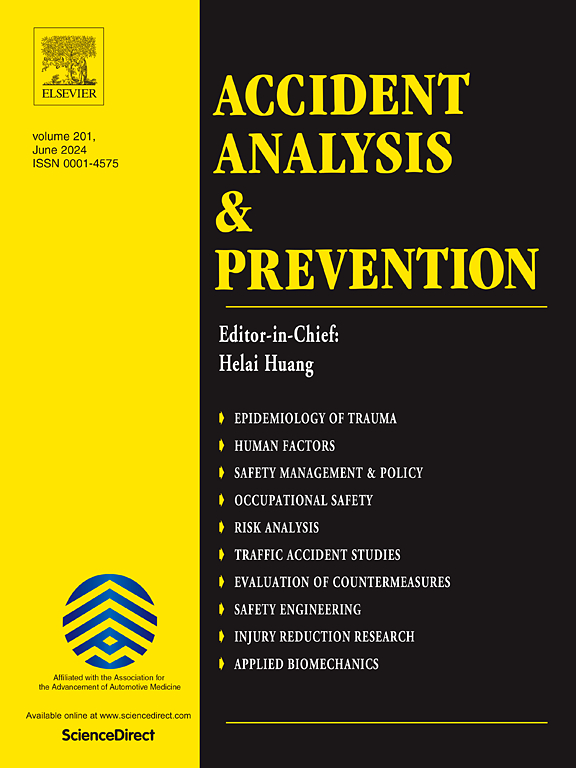右转无信号交叉口人车交互仿真:一种博弈论深度最大熵逆强化学习方法
IF 5.7
1区 工程技术
Q1 ERGONOMICS
引用次数: 0
摘要
城市交通系统中的行人安全已成为一个重要的研究课题。行人作为这一交通框架中的弱势群体,在复杂的城市道路环境中面临着更大的安全风险。保护这个群体,维护他们在城市交通中的权益,已经引起了学术界和工业界的关注。本研究的目的是建立一个可靠的模拟模型,以表示行人在无信号人行横道上的行为。提出了一个数据驱动的人车交互行为建模框架,将右转无信号交叉口的人车交互过程描述为一个标准的马尔可夫决策过程。在该框架中,行人被视为主要代理,人车交互使用博弈论进行描述。深度最大熵逆强化学习(DMIRL)方法与博弈论相结合,用于确定封装这些相互作用的奖励函数。然后设计深度q -网络(Deep Q-network, DQN)算法,基于推导的奖励函数来模拟行人过马路行为。最后,与不考虑游戏动态的基线算法进行比较,验证了所提出框架的有效性和可行性。本文章由计算机程序翻译,如有差异,请以英文原文为准。
Simulation of human–vehicle interaction at right-turn unsignalized intersections: A game-theoretic deep maximum entropy inverse reinforcement learning method
The safety of pedestrians in urban transportation systems has emerged as a significant research topic. As a vulnerable group within this transportation framework, pedestrians encounter heightened safety risks in complex urban road environments. Protecting this group and safeguarding their rights and interests in urban transportation has garnered attention from academia and industry. The objective of this study is to develop a reliable simulation model that represents pedestrian crossing behavior at unsignalized crosswalks. A data-driven human–vehicle interaction behavior modeling framework is proposed, describing the human–vehicle interaction process at right-turning unsignalized intersections as a standard Markov decision-making process. In this framework, pedestrians are treated as the primary agents, and human–vehicle interactions are described using game theory. The Deep Maximum Entropy Inverse Reinforcement Learning (DMIRL) approach, combined with game theory, is employed to identify a reward function that encapsulates these interactions. The Deep Q-network (DQN) algorithm is then designed to simulate pedestrian crossing behavior based on the derived reward function. Finally, a comparison with a baseline algorithm that does not account for the game dynamics validates the proposed framework’s effectiveness and feasibility.
求助全文
通过发布文献求助,成功后即可免费获取论文全文。
去求助
来源期刊

Accident; analysis and prevention
Multiple-
CiteScore
11.90
自引率
16.90%
发文量
264
审稿时长
48 days
期刊介绍:
Accident Analysis & Prevention provides wide coverage of the general areas relating to accidental injury and damage, including the pre-injury and immediate post-injury phases. Published papers deal with medical, legal, economic, educational, behavioral, theoretical or empirical aspects of transportation accidents, as well as with accidents at other sites. Selected topics within the scope of the Journal may include: studies of human, environmental and vehicular factors influencing the occurrence, type and severity of accidents and injury; the design, implementation and evaluation of countermeasures; biomechanics of impact and human tolerance limits to injury; modelling and statistical analysis of accident data; policy, planning and decision-making in safety.
 求助内容:
求助内容: 应助结果提醒方式:
应助结果提醒方式:


